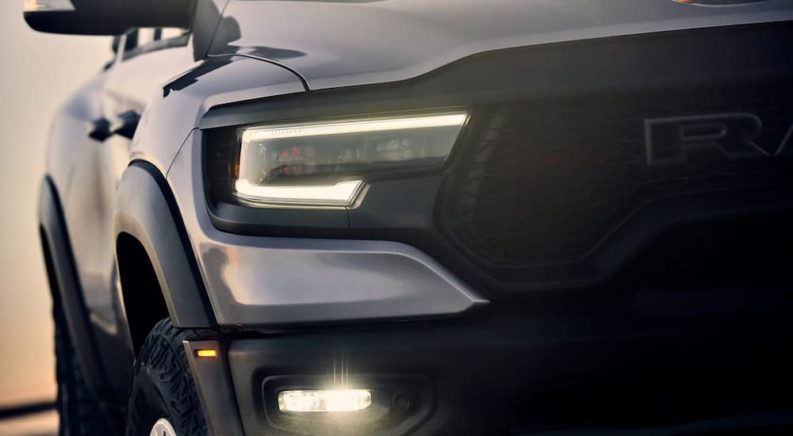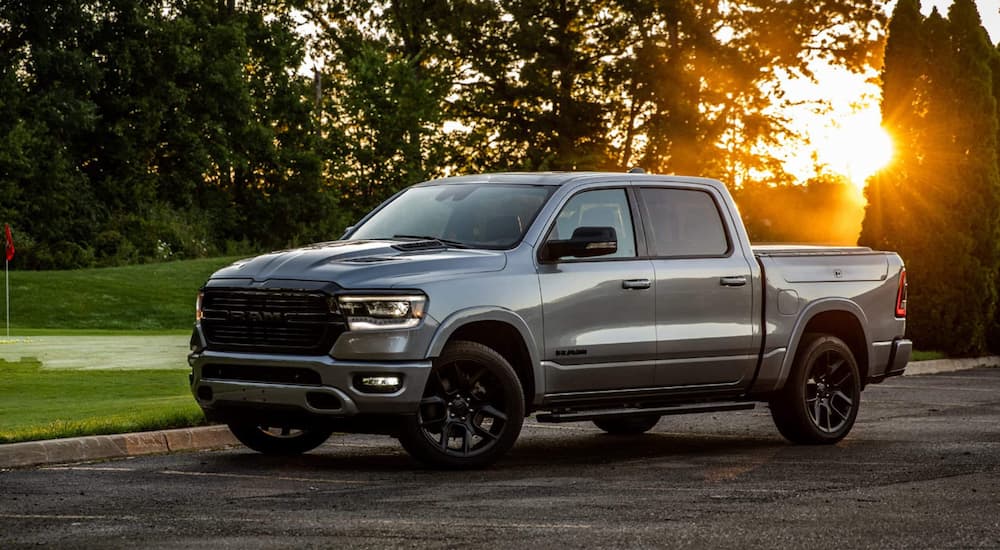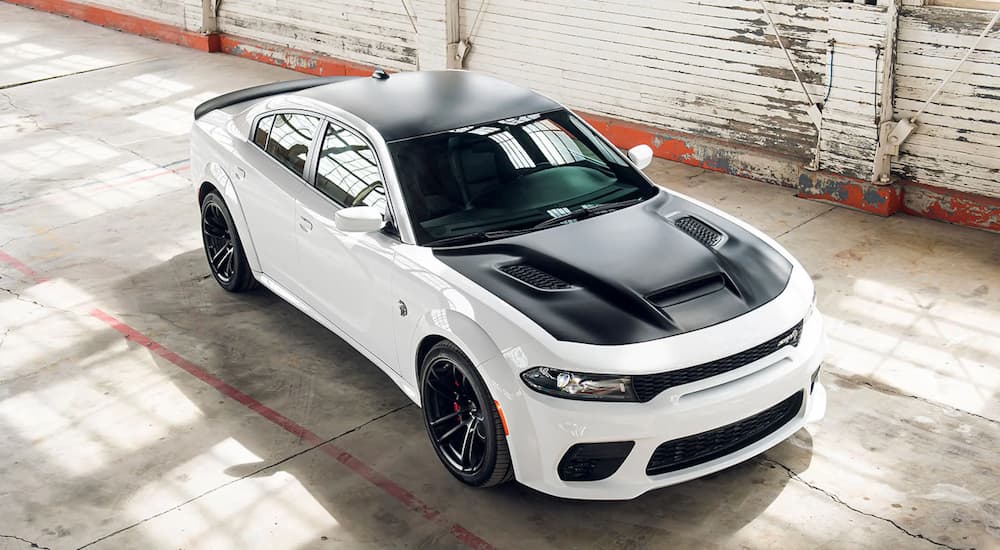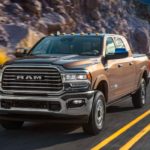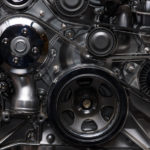“That thing got a HEMI?” While the question was made popular by a string of commercials for the Ram truck lineup, it did more than advertise the best-selling truck. It made a lasting connection between the powerful HEMI and the Ram brand. Today, the HEMI name is one you’ll find throughout your search for Ram dealers near me as you look for capable trucks that can satisfy all your driving needs. With the HEMI name, you can rest assured that Ram’s workhorses will do exactly that and more.
What makes the HEMI so special? What are its origins, and why is it such an integral part of the Ram lineup? Answering these questions starts by understanding the HEMI’s design and requires traveling back in time to the early 1900s when automakers were simply looking to design a more powerful engine.
HEMI: How It Works
The HEMI gets its name from the hemispherical shape of the combustion chamber that houses the spark plug and is the venue for the main event–the combustion required to power the engine. The hemispherical shape meant reduced surface area compared to the old flathead engines and positioned the spark plug in the top center of the chamber for improved combustion. Finally, the HEMI used large intake and exhaust valves on either side of the spark plug, maximizing the air flowing in and out of the chamber. In turn, the combustion process is quicker and more powerful.
HEMI: Origin and Evolution
For as long as engines have been around, innovators and engineers have toyed with the shape of the combustion chamber to improve performance. The first known hemispherical design is attributed to Pipe, a Belgian automaker that debuted a four-cylinder HEMI engine in 1905. Two years later, the engine proved its capability under the hood of the Fiat 130 HP Grand Prix race car, igniting a trend among automakers looking to give drivers the power they demanded.
While this demand continued, financial issues and the outbreak of World War II forced automakers to put their designs on hold. Chrysler, however, refused to let the idea go and tasked a team of engineers to develop a HEMI engine for use in the war efforts. Chrysler’s persistence paid off with a massive V16 HEMI designed for the Republic P-47 Thunderbolt fighter plane. The war ended before the XI-2220 HEMI could enter production, but a V12 HEMI later found its way into the M47 Patton tank for the Korean War.
Entering the Civilian Market
Chrysler refused to let its hard work go to waste and turned its attention to delivering more power to its civilian fleet. The first Chrysler-made HEMI automobile engine, which was known as the FirePower, debuted in 1951 and made history as the automaker’s first overhead-valve V8. Delivering 180 horsepower, the FirePower was instantly embraced for its capability and sparked an interest in the HEMI name while igniting a growing need for speed among American drivers throughout the 1950s.
The HEMI Name and the 426
Longtime HEMI fans associate the name with the 426 engine, which marks the official debut of the HEMI name and its second generation. Known in some realms as the “Elephant Engine,” the 426 cubic-inch (7.0-liter) big-block engine was originally built for the 1964 Plymouth Belvedere race car but made its way into models like the Dodge Charger and Plymouth Barracuda. With the HEMI delivering 425 horsepower and taking the top three spots at the 1964 Daytona 500, it’s no surprise that Chrysler’s HEMI-powered vehicles were limited to veteran racers and those with deep pockets and a penchant for speed.
A HEMI for Everyone
The HEMI’s exclusivity shifted in the new millennium with the debut of the third-generation model. Delivering the same jaw-dropping power and sharing the signature HEMI design, the all-new 5.7-liter HEMI was finally accessible to everyday Americans looking to satiate their need for speed. This was more than possible as the 5.7-liter HEMI made its way under the hood of the 2004 Dodge Durango, 2005 Jeep Grand Cherokee, 2005 Chrysler 300C, and the 2003 Ram 1500.
With drivers flocking to see if the HEMI lived up to the hype, Chrysler’s Street and Racing Technology division returned to the drawing board. Determined to deliver more power and capability, the SRT team unveiled the 6.1-liter HEMI designed specifically for drivers looking for sport-like handling. The engine answered that need and so much more, churning out 425 horsepower and 420 lb-ft of torque on SRT-8 versions of popular models from the Dodge Challenger to the Jeep Grand Cherokee.
The iconic HEMI evolved once again in 2007 with the debut of the 6.4-liter HEMI 392 that churned out 525 horsepower and 510 lb-ft of torque. Originally sold as a crate engine, the 6.4-liter eventually made its way into production, where it was codenamed the “Apache” and debuted in the 2011 Dodge Challenger SRT. Later added to the powertrain lineup for other performance models, the Apache was also modified for the 2014 Ram 2500 and 3500.
Raising Hell(cat)
“Go big or go home” was likely the motto for the Chrysler team that designed the 6.2-liter HEMI Hellcat engine, and man did they ever go big. The Hellcat made its debut on the 2015 Dodge Charger SRT Hellcat and lived up to its reputation as the right kind of hell on wheels. Delivering 707 horsepower and 650 lb-ft of torque, the Hellcat was named the most powerful series-production engine in history. This power pushed the Charger from 0 to 100 mph in less than 13 seconds with a top speed of 204 mph, making it the fastest and most powerful sedan in the world.
The 2015 Charger no longer holds its title as the most powerful sedan in the world, but HEMI fans have no need to worry. The title stays in the family thanks to the debut of the 2021 “Demon-possessed” Charger SRT Hellcat Redeye that delivers 797 horsepower, 707 lb-ft of torque, and a top speed of 203 mph. Now the most powerful and fastest mass-produced sedan in the world, the 2021 Charger SRT Hellcat Redeye is the best example of the HEMI’s evolution and its ability to stay true to its original purpose–to deliver jaw-dropping power, performance, and capability.
That Thing Got a HEMI?
Do you remember the first HEMI commercial? Two men in a muscle car pull up to a red light next to a man in a Ram 1500 with a Dodge Charger loaded on a trailer. The men ask, “That thing got a HEMI?” with a glimmer in their eyes as they rev their engine and race the truck. The HEMI, as expected, pulls out ahead (even with a trailer), leaving the two men in utter amazement. It turns out the 1500 and the Charger both had HEMIs under their hoods.
Today, the commercial might be dated, but it shows how Americans feel about the HEMI. There are those who take great pride in the HEMI name because it denotes power and capability, and who doesn’t want that in their vehicle? To others, it’s a source of envy and awe, just like the guys in the muscle car felt. Either way, the HEMI is a conversation starter and a name that needs no introduction. It’s the heartbeat of the Ram lineup and one that continues to beat loudly and powerfully.

